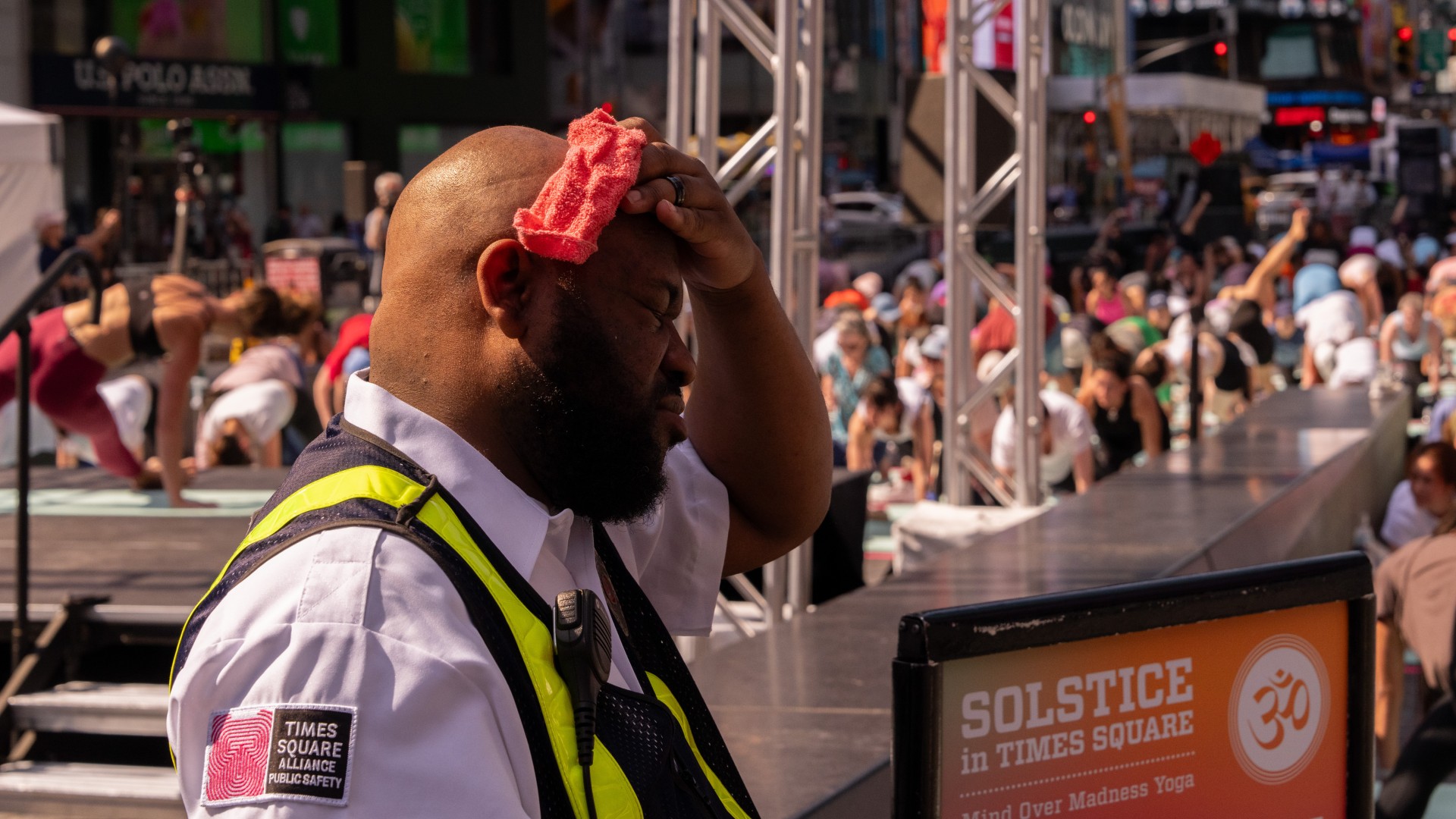Wet-bulb temperature: What is it, and how is it linked to human survival in extreme heat?
Scientists use "wet-bulb temperature" to gauge how extreme heat affects the body. But what is it?

Extreme heat waves can cause cases of dehydration, exhaustion, heat stroke and even death. But the air temperature isn't the only factor in how dangerous a hot day is; there's also another measure, called the wet-bulb temperature.
The wet-bulb temperature accounts for both the temperature of the air — known as "dry-bulb temperature" — and the amount of water vapor, or humidity, in it.
Wet-bulb temperature is measured using a thermometer that is wrapped in a cotton cloth that has been soaked in water. If the humidity of the air around the bulb is less than 100%, some of the water from the cloth will evaporate and cool the thermometer, Kathleen Fisher, a doctoral student in exercise physiology at Penn State, told Live Science.
In a more humid environment, less water can evaporate from the cloth because the air is already saturated. Consequently, the thermometer can't cool down as much as it would in a drier climate. The higher the humidity, the higher the wet-bulb temperature, and vice versa.
Related: 200,000 Americans could die of temperature-related causes each year if global warming hits 3 C
Wet-bulb temperature is calculated using a specific equation that considers dry-bulb temperature and relative humidity. It can also be easily deduced by reading a Psychrometric Chart, such as the one shown below. For example, an air temperature of 104 degrees Fahrenheit (40 degrees Celsius) and a relative humidity of 30% would result in a wet-bulb temperature of around 78.8 F (26 C). However, a lower air temperature of 77 F (25 C) but a higher humidity level of 90%, would produce a similar wet-bulb temperature of around 75.2 F (24 C).

Wet-bulb temperature is useful for understanding how hot weather affects the body because a similar evaporative process occurs when people sweat. How hot you feel at a given temperature can vary depending on whether you're in a humid or dry environment.
Sign up for the Live Science daily newsletter now
Get the world’s most fascinating discoveries delivered straight to your inbox.
Imagine you're standing in either swampy Houston or arid Phoenix, Jennifer Vanos, an associate professor in the School of Sustainability at Arizona State University, told Live Science. Even if the temperature is the same in both places, it may feel hotter in Houston because it is more humid and sweat can't evaporate to cool you off. In this example, Houston would have a higher wet-bulb temperature than Phoenix.
Scientists originally theorized that 95 F (35 C) was the highest wet-bulb temperature humans could survive, according to basic principles of physiology. Once this wet-bulb temperature was reached, the human body would not be able to cool itself to a safe level, they predicted.
However, new research is beginning to question that assumption. For instance, some scientists argue that using a 95 F wet-bulb temperature as a threshold to define survivability may underestimate how much people differ in their response to heat.
"If you assume that the 35 degrees Celsius wet-bulb temperature was the limit to human survivability in heat, then we shouldn't see hyperthermia deaths in Phoenix or in other dry regions of the world, and we see lots of them," Vanos said.
For example, in a very hot, dry location, people may sweat more to cool their body. However, you can only sweat so much. Older adults, for instance, may not be able to sweat as well as younger people, so they would have a lower survivability limit, Vanos said. Exercising and being exposed to direct sunlight can also increase someone's risk of overheating, as well as not drinking enough water to replenish fluid lost in sweat.
"We need to move away from black-and-white thinking, because we can look at our neighbor and see, 'Oh, they're suffering in this heat and we feel fine' — why is that?" she said.
Wet-bulb temperature can also be misleading in really dry environments, Fisher said.
For instance, if the outside temperature is 122 F (50 C) with 10% humidity, the wet-bulb temperature may be around 78 F (26 C), she said. If people were to look only at the wet-bulb temperature, they may falsely believe that the weather is less extreme than it actually is, which could be dangerous, she added.
Ever wonder why some people build muscle more easily than others or why freckles come out in the sun? Send us your questions about how the human body works to community@livescience.com with the subject line "Health Desk Q," and you may see your question answered on the website!

Emily is a health news writer based in London, United Kingdom. She holds a bachelor's degree in biology from Durham University and a master's degree in clinical and therapeutic neuroscience from Oxford University. She has worked in science communication, medical writing and as a local news reporter while undertaking NCTJ journalism training with News Associates. In 2018, she was named one of MHP Communications' 30 journalists to watch under 30. (emily.cooke@futurenet.com)









